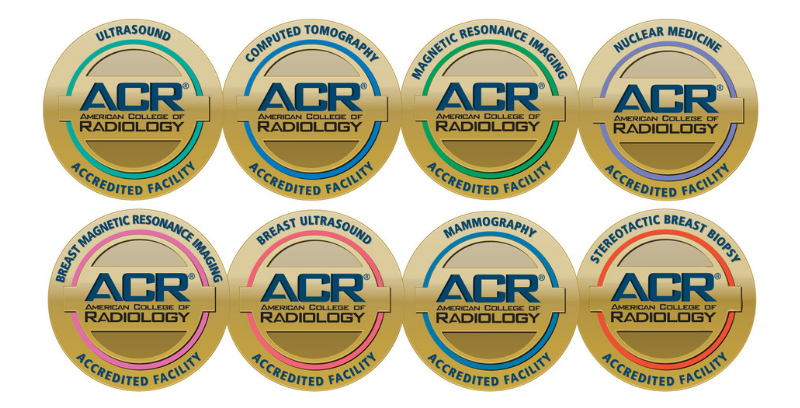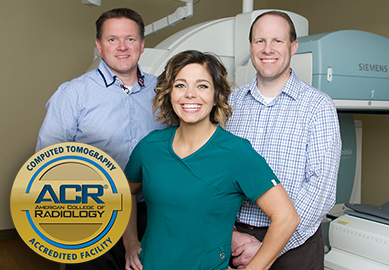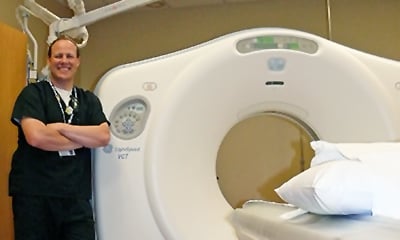Computed Tomography (CT), sometimes called CAT scan, uses special x-ray equipment to obtain image data from different angles around the body. It then uses computer processing of the information to show a cross-section of body tissues and organs.
CT imaging is particularly useful because it can show several types of tissue (lung, bone, soft tissue, and blood vessels) with great clarity very quickly. Using specialized equipment and expertise to create and interpret CT scans of the body, radiologists can more easily diagnose problems such as cancers, cardiovascular disease, infectious disease, trauma, and musculoskeletal disorders. While a CT scan is a patient-friendly exam, it does involve minimal radiation exposure, but can yield invaluable information.
Common uses of CT
CT examinations are often used to plan biopsies and other minimally invasive procedures. CT can clearly show even very small bones, as well as surrounding tissues such as muscle and blood vessels. This makes it invaluable in diagnosing and treating spinal problems and injuries to the hands, feet, and other skeletal structures.
In cases of trauma, CT can quickly identify injuries to the liver, spleen, kidneys, or other internal organs. CT can also play a significant role in the detection, diagnosis, and treatment of vascular diseases that can lead to stroke, gangrene or kidney failure.
Investing In Your Safety
In April of 2013, we upgraded our technology to a General Electric VCT 64-slice machine with Adaptive Statistical Iterative Reconstruction (ASiR) technology, capable of producing higher-quality images in less time with a lower radiation exposure for patients.
The new CT machine captures images fast enough to catch the heart in mid beat. In addition to cardiac studies, this also means vast improvements in vascular and pulmonary embolism studies.
Here For You 24/7
The CT department at Pullman Regional Hospital operates 24 hours a day, seven days a week so trauma patients can been seen at any hour. Currently, 12 technologists are trained in CT; all are registered and board certified by the American Registry of Radiologic Technologists (ARRT).



